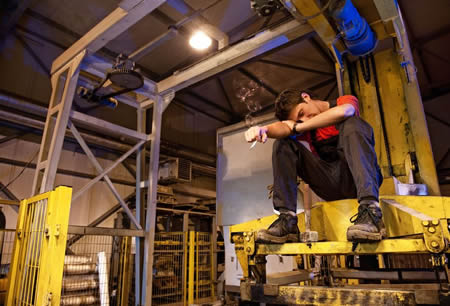 Summer is here and the shop floor is cooking. While the heat is great for vacationing, it can be a serious problem in your facility. Here are some of the risks associated with the heat that you should be aware of, as well as some tips to mitigate that risk.
Summer is here and the shop floor is cooking. While the heat is great for vacationing, it can be a serious problem in your facility. Here are some of the risks associated with the heat that you should be aware of, as well as some tips to mitigate that risk.
Health Risks – the warmer the building is, and the poorer the ventilation, the greater risk of heat related health problems such as heat cramps, heat exhaustion, and heat stroke, which can be deadly. Employees should take frequent breaks to rehydrate and have healthy snacks.
Equipment Failure – heat poses a serious risk to equipment as well. According to the Arrhenius Equation an electronic device can operate for 32 years at 45° C but will last just four years at 80° C. Finding ways to reduce the heat in your building could dramatically increase the life of your equipment which will offset the costs associated with reducing the heat.
To reduce the heat in your shop consider the following:
Ventilate & Circulate – use air conditioning, ceiling fans, exhaust fans, and portable fans to keep air moving and exhaust hot air out of the facility.
Dehumidify – the higher the humidity the worse the effect of the heat are. Installing dehumidifiers can go a long ways towards improving the comfort level in the building.
Open Doors & Windows – while this sounds simple it can be incredibly effective. Opening doors and windows to the north and south is the most effective way to get air flow through a building. Opening windows that are higher up will naturally draw the hot air out the top with cooler air coming in the bottom to replace it.
Chillers – while chillers can be utilized with specific pieces of machinery to control their temperature they can also be used within a factory to cool and dehumidify the air inside the building. Air can be pushed through the chilled water to cool an indoor space. Some shops have one large centralized chiller, while others have several smaller units spread throughout the facility. There are a variety of chiller options to consider – air-cooled, evaporation cooled, or water-cooled.
Regardless of which steps you put in place to reduce heat it’s important to make sure everyone working in the facility is educated on the effects of heat to the body. All employees should know the signs of heat stress and act quickly if they see a co-worker struggling.
